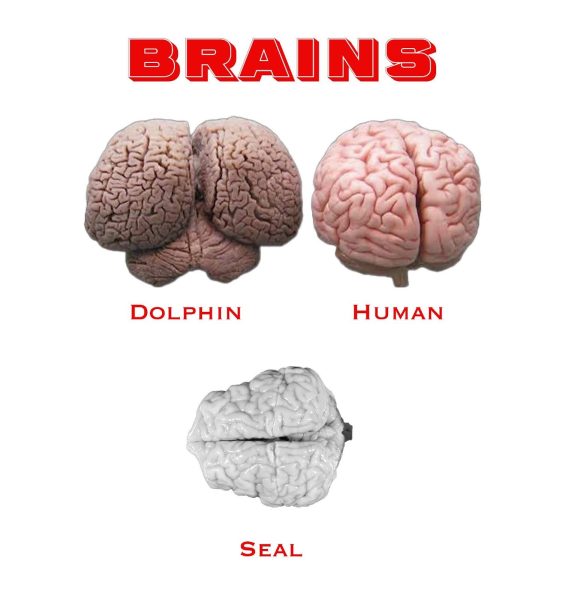Dolphins are one of the most beloved sea creatures, earning lots of points on the popularity scale. These adorable creatures embody human-like characteristics while having many impressive characteristics of their own, such as the process of echolocation, which allows dolphins and other cetaceans to communicate with each other. The dolphins are able to ‘see’ the sound waves that bounce off objects in the water to send sound to other dolphins to warn them of dangers.
Unlike many sea creatures, dolphins have extremely similar behavior patterns to humans, with the ability to recognize emotions and maintain social groups. Many even argue that dolphins are one of the most similar sea species to humans. David Busbee, from Texas A&M University, even stated that the genomes (a complete set of DNA) of dolphins and humans are virtually identical. However, within the past 20 years, researchers have identified another trait that can be compared to some humans – murderous urges.
Despite it being uncommon for humans to commit homicide, in a series of studies by the University of Texas at Austin, anywhere from 50-91% of surveyed individuals at different universities admitted to having had homicidal thoughts or fantasies.
For the majority of the animal kingdom, killing only happens for two reasons – for food, or in self-defense, and dolphins do not seem to follow this pattern. The New York Times reports that “Unlike most animal killers, which eat their prey, dolphins seem to have murderous urges unrelated to the need for food. They have even been observed in recurring acts of infanticide.”
While the term murderous may sound dramatic or extreme, it points to a reality where dolphins display behavior that is completely incomparable to mere survival instincts.
The difficult relationship between dolphins and porpoises has been observed by many scientists, as dolphins have been known to seek out and attack porpoises for no apparent reason, as porpoises are not a source of food for dolphins. A study by The Royal Society and the National Institute of Health (NIH) found that 63.4% of harbor porpoises found stranded in the Moray Firth (an inlet in the North Sea) experienced multiple injuries and fractures to their bones that were consistent (comparable) with previous data on bottlenose dolphin attacks.
Multiple instances of adult dolphin aggression have been reported, especially with the issue of infanticide. In many cases, dolphins use extreme aggression to harm or kill their calves.
In 2013, scientists set out to be the first in history to witness a bottlenose dolphin give birth. However, these scientists from Savannah State University soon witnessed two male bottlenoses attempt to attack the calf so soon after the birth that the umbilical cord could still be seen attached to the mother.
This is not the only instance of this behavior. The New York Times also reported a case off the coast of Scotland, where a dolphin flung a baby around in its mouth for over an hour, hitting it against the water, until the calf sank. Another case occurred in Virginia – 9 calves were found dead with extreme trauma to their bodies, such as broken ribs, and skulls and vertebrae dismembered. Bite marks on the bodies corresponded with the shape of adult dolphin teeth.
Now, a question that has yet to be definitively answered is whether dolphins can be dangerous to humans. Current evidence shows that humans have sustained only minor injuries from dolphin interactions. Most likely, domesticated dolphins may not be a point of concern. This takes away much of the danger, especially for children who only interact with these domestic animals under professional supervision. However, scientists have pointed to signs that dolphins experience significant stress when swimming alongside humans, which could contribute to aggression in the wild. Therefore, the only time dolphins may be a danger to humans is when they feel endangered. Self-defense is a typical trait of all animals in the animal kingdom and does not play into the psychopathic traits they display.
When you think about it, it does make a lot of sense. Dolphin brains are marginally larger than many animals, with the average bottlenose dolphin brain weighing around 1,600 grams. With this larger brain size, more complexity can be noted compared to marine animals with much smaller brains, such as sea lions. Based on their similarities to humans both emotional and neurological, and the complexity of the dolphin brain, it can be inferred that similarly to humans, some dolphins can have psychopathic traits or tendencies as well.

































